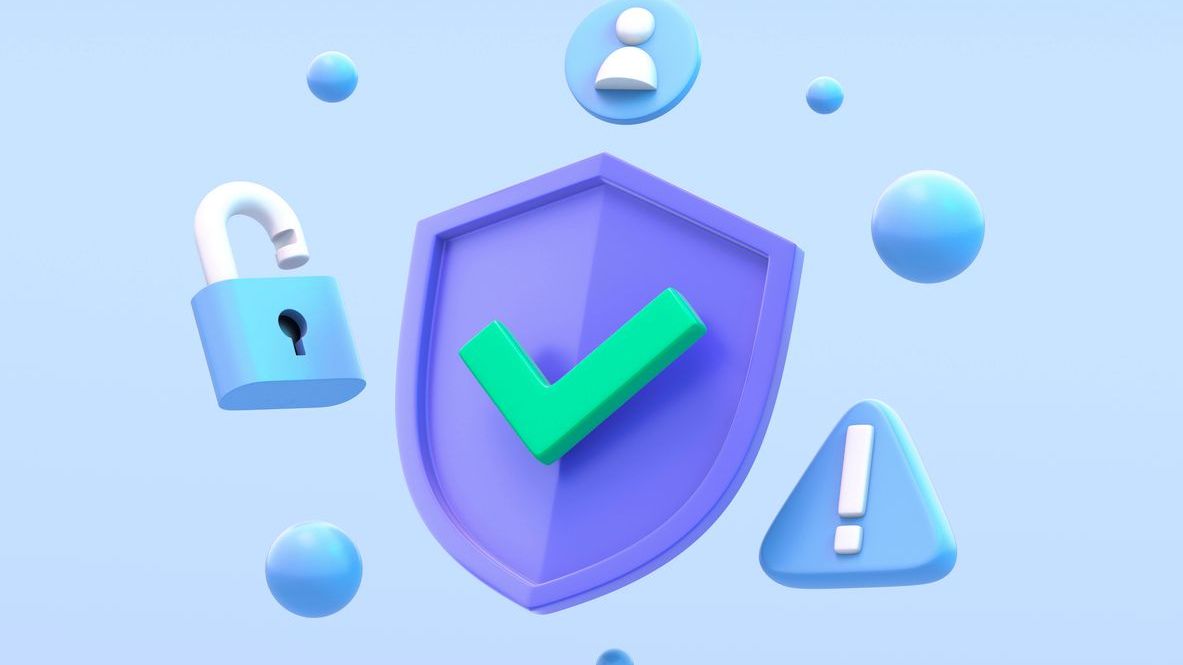In today’s digital workplace, employee scheduling software has become essential for businesses across industries. However, as companies increasingly rely on these systems to manage their workforce, the security of scheduling platforms has emerged as a critical concern. Secure scheduling features protect sensitive employee data, ensure compliance with regulations, and safeguard business operations from potential breaches. Whether you’re managing a retail operation, healthcare facility, or hospitality venue, understanding the security capabilities of your scheduling software is no longer optional—it’s a fundamental business requirement.
The right secure scheduling solution offers much more than just convenience; it provides comprehensive protection for your employee data while streamlining operations. With features ranging from advanced encryption and role-based access controls to secure communication channels and comprehensive audit trails, these systems create a foundation for both efficient workforce management and robust security protocols. As cyber threats continue to evolve, organizations need scheduling software that not only simplifies employee management but also implements sophisticated security measures to protect sensitive information.
Why Security Matters in Scheduling Software
Employee scheduling software contains a wealth of sensitive information that requires protection. From personal contact details to work patterns and even payroll integration data, these systems handle information that could be damaging if compromised. Security in scheduling systems isn’t merely about protecting data—it’s about maintaining operational integrity, building employee trust, and ensuring business continuity. Modern security features in scheduling software address multiple layers of protection.
- Compliance Requirements: Secure scheduling features help businesses meet regulatory obligations including GDPR, HIPAA, and industry-specific data protection laws.
- Data Breach Prevention: Strong security measures significantly reduce the risk of costly and reputation-damaging data breaches.
- Operational Protection: Security features safeguard against schedule tampering that could disrupt business operations or create labor cost overruns.
- Employee Privacy: Secure systems protect personal information and maintain appropriate boundaries between work and private data.
- Business Reputation: Implementing robust security demonstrates commitment to protecting both customer and employee information.
According to a study referenced by Shyft’s security resources, businesses using secure scheduling solutions report up to 43% fewer security incidents related to workforce management systems. The investment in secure scheduling technology delivers both immediate and long-term benefits across operations, compliance, and risk management areas.
Essential Encryption Features
Encryption forms the foundation of any secure scheduling system, transforming sensitive data into coded information that remains protected even if unauthorized access occurs. Modern scheduling platforms should implement multiple layers of encryption to protect data both at rest and in transit. Effective data privacy practices begin with strong encryption protocols that meet current industry standards.
- End-to-End Encryption: Ensures data remains encrypted throughout its entire journey through the scheduling system, from user device to server storage.
- Transport Layer Security (TLS): Secures data as it moves between the scheduling application and servers, preventing interception during transmission.
- AES-256 Encryption: Military-grade encryption standard that protects stored scheduling data from unauthorized access even if systems are breached.
- Database Encryption: Ensures employee information remains encrypted within database storage, adding another layer of protection.
- Token-Based Authentication: Replaces sensitive credentials with encrypted tokens to validate user sessions without exposing login details.
When evaluating scheduling solutions, it’s important to verify that encryption standards meet both current requirements and have the flexibility to adapt to emerging security protocols. Cloud-based scheduling systems should provide documentation about their encryption implementation and regular security audits that validate their protective measures.
User Authentication and Access Controls
Robust user authentication and granular access controls form the frontline defense in secure scheduling software. These features ensure that only authorized personnel can access specific functions and data within the system based on their role and responsibilities. Through proper employee data management, organizations can maintain tight control over who sees and modifies scheduling information.
- Multi-Factor Authentication (MFA): Requires users to verify their identity through multiple methods, such as passwords plus a mobile verification code, significantly reducing unauthorized access.
- Role-Based Access Control (RBAC): Limits system access based on job functions, ensuring managers, administrators, and staff see only what’s relevant to their position.
- Single Sign-On Integration: Allows secure authentication through existing corporate identity systems while maintaining security protocols.
- Password Policy Enforcement: Automatically requires strong passwords, regular password changes, and prevents password reuse to strengthen access security.
- Session Management: Automatically times out inactive sessions and requires re-authentication after specified periods to prevent unauthorized access from unattended devices.
Companies implementing advanced authentication features report significant reductions in unauthorized schedule changes and data access incidents. Effective implementation should balance security with usability, as overly complex authentication can lead to workarounds that compromise security. Best practices for scheduling system users include regular training on authentication procedures and the importance of credential protection.
Data Privacy Compliance Features
Modern scheduling software must incorporate features that ensure compliance with evolving data privacy regulations worldwide. From GDPR in Europe to CCPA in California and industry-specific regulations like HIPAA, scheduling systems need built-in tools to manage compliance requirements without creating administrative burdens. Fundamental data privacy principles should be embedded throughout the scheduling solution architecture.
- Data Minimization Controls: Allows organizations to collect and store only necessary employee information, reducing compliance scope and risk exposure.
- Consent Management: Provides tools to document and manage employee consent for data collection and processing in compliance with regulations.
- Retention Policy Automation: Automatically enforces data retention policies, securely deleting information when it’s no longer needed or legally required.
- Data Subject Access Request Tools: Simplifies the process of responding to employee requests to access, correct, or delete their personal information.
- Privacy Impact Assessment Support: Provides documentation and assessment tools to evaluate privacy implications of schedule management processes.
Effective scheduling solutions should also provide customizable privacy settings that adapt to different jurisdictional requirements, allowing global organizations to maintain compliance across operations. Privacy and data protection capabilities should be regularly updated to reflect changing legal requirements and emerging privacy standards.
Secure Communication Features
Communication features within scheduling software must incorporate security measures that protect sensitive information shared between managers and employees. Whether distributing schedules, discussing shift changes, or sending company announcements, these communications often contain information that should remain confidential. Secure team communication represents a critical component of comprehensive scheduling platforms.
- Encrypted Messaging: Ensures all communications within the platform remain protected from interception, maintaining confidentiality of schedule discussions.
- Permission-Based Communication Groups: Restricts message visibility to appropriate teams or departments, preventing sensitive information from reaching unintended recipients.
- Secure File Sharing: Allows protected distribution of documents related to scheduling, such as policy updates or special event information.
- Communication Audit Trails: Records messaging history for compliance purposes while maintaining appropriate privacy protections.
- Notification Security: Ensures that automated alerts and notifications about schedule changes don’t expose sensitive details in previews or unsecured channels.
Organizations increasingly rely on integrated communication features within scheduling software to eliminate the security risks associated with using separate messaging applications. Effective communication strategies leverage these secure channels to enhance both operational efficiency and information protection.
Mobile Security in Scheduling Apps
As mobile access becomes standard for employee scheduling, specialized security features for smartphones and tablets are essential. Mobile devices introduce unique security challenges including potential loss or theft, unsecured networks, and varied operating system security levels. Advances in mobile technology have enabled sophisticated security measures tailored to these challenges.
- Biometric Authentication: Incorporates fingerprint or facial recognition to prevent unauthorized access to scheduling apps on mobile devices.
- Remote Wipe Capabilities: Allows administrators to remotely delete scheduling app data if a device is lost or stolen, preventing unauthorized access.
- Application Containerization: Isolates scheduling data from other applications on the device, protecting information even if the device is compromised.
- Offline Security Controls: Maintains protection for cached scheduling data when devices operate without internet connectivity.
- Network Security Monitoring: Detects when devices connect through unsecured networks and applies additional encryption or access limitations.
Effective mobile scheduling security must balance robust protection with user convenience to encourage adoption. The mobile experience should incorporate security measures that operate seamlessly in the background while providing intuitive access to scheduling functions.
Audit Trails and Security Reporting
Comprehensive audit capabilities provide critical security oversight by tracking all activity within the scheduling system. These features create detailed records of who accessed the system, what changes they made, and when actions occurred. Compliance reporting functionality allows organizations to monitor system usage patterns and identify potential security concerns.
- Change Tracking: Records all modifications to schedules, permissions, and system settings with user identification and timestamps.
- Access Logging: Documents every instance of system access, including failed login attempts that might indicate breach attempts.
- Security Incident Alerting: Automatically notifies administrators of unusual activities or potential security violations requiring investigation.
- Tamper-Proof Logs: Ensures audit records cannot be modified or deleted, maintaining an authentic record of system activities.
- Compliance Report Generation: Creates documentation demonstrating adherence to security policies and regulatory requirements.
Audit trails serve both security and operational purposes, helping organizations identify inefficiencies and potential policy violations while maintaining system integrity. Advanced analytics and reporting capabilities transform audit data into actionable security insights that strengthen overall protection strategies.
Disaster Recovery and Data Backup
Secure scheduling software must include robust disaster recovery features to ensure business continuity in the event of system failures, cyber attacks, or other disruptions. Data backup capabilities protect against information loss while allowing rapid restoration of scheduling operations. Evaluating system performance should include assessment of these critical recovery features.
- Automated Backup Systems: Regularly creates encrypted copies of all scheduling data without requiring manual intervention.
- Geographic Redundancy: Stores backup data across multiple physical locations to protect against regional disasters or outages.
- Point-in-Time Recovery: Enables restoration of scheduling data to specific moments before incidents occurred, minimizing data loss.
- Backup Encryption: Ensures that backed-up scheduling data remains protected with the same encryption standards as the live system.
- Recovery Testing Protocols: Includes procedures to regularly verify that backup data can be successfully restored in emergency situations.
Effective disaster recovery capabilities minimize downtime during incidents while maintaining security throughout the recovery process. Protocols for handling data breaches should integrate with backup systems to enable rapid response while preserving evidence for investigation.
Integration Security Controls
Modern scheduling software typically integrates with other business systems including payroll, HR, and time tracking applications. These integration points require specific security controls to prevent them from becoming vulnerabilities. Integration technologies must incorporate security by design to maintain protection across connected systems.
- API Security: Implements authentication, encryption, and access controls for all application programming interfaces used in system integrations.
- Data Filtering: Restricts the types and amounts of information shared between systems to minimize exposure of sensitive data.
- Integration Authentication: Requires secure credentials and verification for all connected systems before allowing data exchange.
- Activity Monitoring: Tracks all data transfers between integrated systems to detect unusual patterns or potential security issues.
- Regular Security Testing: Conducts scheduled vulnerability assessments specifically targeting integration points between systems.
Security-focused organizations ensure that all connected systems maintain compatible security standards to prevent weaker systems from compromising scheduling data protection. The benefits of integrated systems can be fully realized only when appropriate security controls are implemented across all connected platforms.
Vendor Security Assessment
Selecting secure scheduling software requires thorough evaluation of the vendor’s security practices and infrastructure. Third-party security risks can significantly impact an organization’s overall data protection posture. Vendor security assessments provide critical insights into the provider’s commitment to security excellence.
- Security Certification Verification: Confirms vendor compliance with relevant standards such as SOC 2, ISO 27001, or industry-specific security frameworks.
- Penetration Testing Reports: Reviews documentation of regular security testing conducted on the scheduling platform to identify vulnerabilities.
- Security Update Processes: Evaluates how quickly and effectively vendors respond to emerging threats with security patches and updates.
- Data Center Security: Assesses physical security measures protecting server infrastructure where scheduling data resides.
- Security Incident History: Investigates the vendor’s track record in handling security breaches or vulnerabilities, including communication transparency.
When selecting the right scheduling software, organizations should request detailed security documentation and consider including security requirements in service level agreements. Vendors like Shyft provide comprehensive security information to help organizations make informed decisions about scheduling platform security.
Implementation of Security Best Practices
Successfully deploying secure scheduling software requires attention to implementation details that can significantly impact overall security effectiveness. Even the most secure platform can be compromised by poor implementation practices or inadequate configuration. Implementation and training represent critical phases in establishing secure scheduling operations.
- Security Configuration Reviews: Conducts thorough assessment of all security settings during implementation to ensure appropriate protection levels.
- Role Definition Protocols: Establishes clearly documented processes for defining and assigning user roles and permissions.
- Security Awareness Training: Provides comprehensive education for all system users about security practices and responsibility.
- Secure Default Settings: Ensures base configuration starts with maximum security rather than requiring manual security enhancement.
- Ongoing Security Maintenance: Establishes regular processes for reviewing and updating security configurations as needs change.
Organizations that focus on security during implementation report fewer incidents and stronger adoption of secure practices among users. Training for managers and administrators should emphasize both operational capabilities and security responsibilities to build a security-conscious scheduling culture.
Conclusion: Building a Secure Scheduling Foundation
Implementing secure scheduling software provides organizations with both immediate operational benefits and long-term risk reduction. By selecting solutions with robust security features—from encryption and access controls to compliance tools and secure integrations—businesses create a protected environment for managing their workforce. As security threats continue to evolve, organizations should regularly reassess their scheduling systems to ensure they maintain appropriate protection levels and incorporate emerging security capabilities.
The investment in secure scheduling features delivers significant returns through reduced risk exposure, enhanced compliance capabilities, and protected business operations. Organizations that prioritize security in their scheduling technology demonstrate commitment to protecting employee data while establishing systems that can adapt to changing security requirements. By implementing comprehensive secure scheduling solutions like those offered by Shyft’s employee scheduling platform, businesses create a foundation for both operational excellence and robust information security.
FAQ
1. How does encryption protect employee scheduling data?
Encryption transforms readable scheduling data into coded information that can only be accessed with the proper decryption keys. This protection works at multiple levels—securing data stored in databases (encryption at rest), protecting information as it travels between devices and servers (encryption in transit), and safeguarding communications within the system. Even if unauthorized access occurs, properly encrypted data remains unreadable and unusable. Modern scheduling systems should implement industry-standard encryption like AES-256 for stored data and TLS for data transmission to ensure comprehensive protection regardless of where the information resides.
2. What role-based permissions should scheduling software include?
Effective scheduling software should offer granular permission controls that align with organizational roles and responsibilities. At minimum, systems should include: Administrator permissions with full system access for IT and system managers; Schedule manager permissions allowing creation and modification of schedules for designated teams; Department head permissions for viewing and limited editing of schedules within specific departments; Employee-level permissions for viewing personal schedules and requesting changes; and Read-only permissions for stakeholders who need visibility without modification capabilities. These permission structures should be customizable to accommodate unique organizational needs and should include the ability to restrict access by location, department, or other relevant parameters.
3. How can secure scheduling software help with labor law compliance?
Secure scheduling software contributes to labor law compliance through several key mechanisms. It maintains tamper-proof records of all scheduling activities, providing documentation of compliance with working time regulations, break requirements, and overtime management. Automated rule enforcement prevents schedule creation that would violate regulations such as minimum rest periods or maximum consecutive working days. Secure audit trails create verifiable evidence of scheduling practices if regulatory inquiries arise. Additionally, advanced systems incorporate jurisdiction-specific rules that automatically update when regulations change, ensuring scheduling always reflects current legal requirements while maintaining the security of this sensitive compliance data.
4. What mobile security features should I look for in scheduling apps?
When evaluating mobile security in scheduling apps, prioritize these essential features: Biometric authentication options (fingerprint or facial recognition) to prevent unauthorized access; Remote wipe capabilities that can erase sensitive data if devices are lost or stolen; Automatic timeout functions that require re-authentication after periods of inactivity; Data containerization that separates scheduling information from other apps on the device; Offline mode security that protects cached data when devices aren’t connected; and Encrypted local storage that ensures any schedule data stored on the device remains protected. The mobile interface should also clearly indicate when users are accessing sensitive information to promote security awareness during scheduling activities.
5. How often should scheduling software security be reviewed?
Scheduling software security should undergo different types of reviews at varying intervals. Comprehensive security assessments should be conducted annually, including penetration testing and vulnerability scanning. Permission and user access reviews should occur quarterly and whenever significant personnel changes happen. Security patch management should be ongoing, with critical updates applied immediately upon release. Configuration reviews should be performed semi-annually to identify security drift or settings that no longer align with policies. Additionally, organizations should conduct impromptu reviews following security incidents, significant system changes, or when new threat intelligence emerges. Vendors’ security practices should also be reassessed annually to ensure they maintain appropriate security standards.












